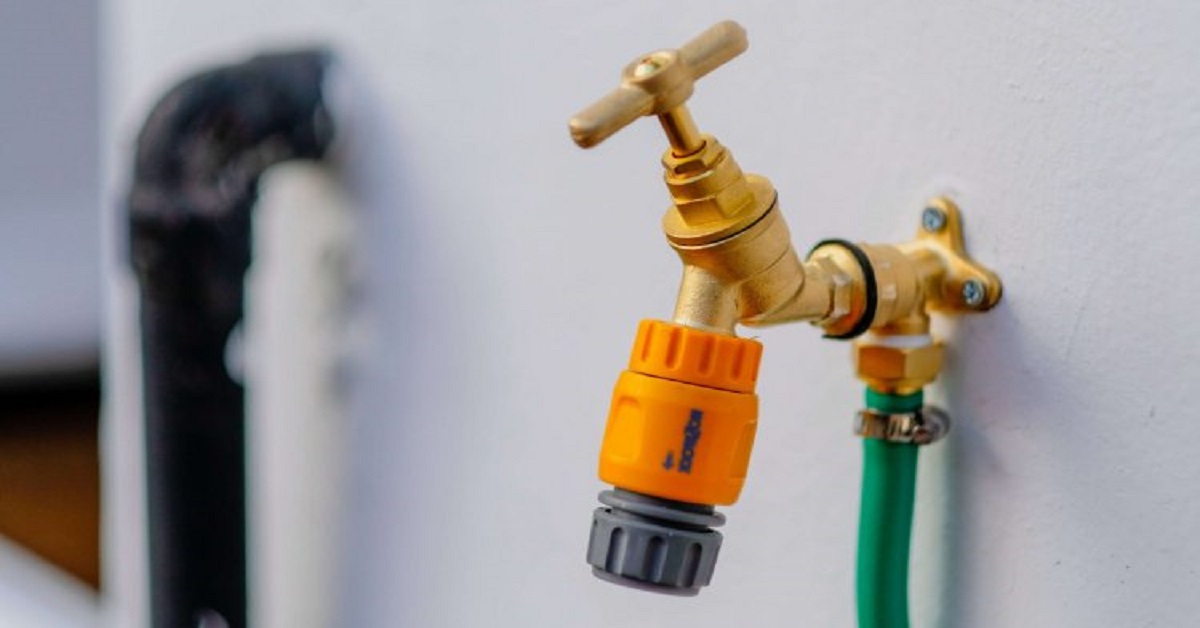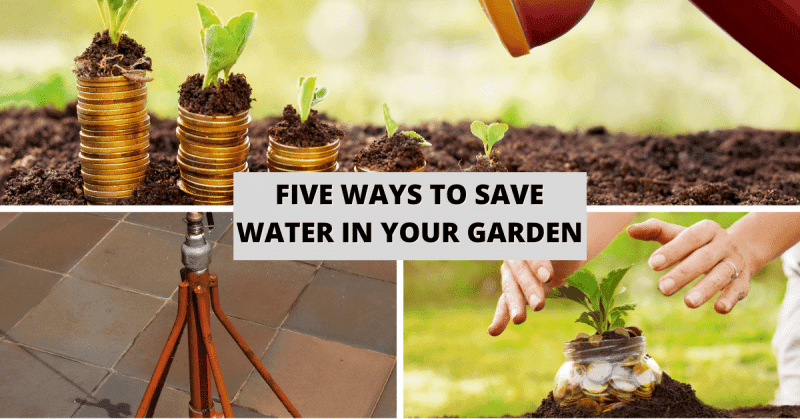There are more than 10 ways to save the environment, and this is one of them! Bless your soul for being here! Due to the fact that water is our planet’s most abundant resource, it has become a great reason for us to be complacent in preserving it.

Whether that’s a natural human reaction or we are just altogether wasteful is a psychological topic for another day. We’re here to talk about preservation! Whether you’re new to gardening or already pretty savvy, it’s not hard to imagine how much water it takes to keep our garden healthy and pristine.
Thank you for reading this post, don't forget to the best blogger Guy About Home who offers the best garden and home improvement tips! If you are a home decor and design fan, don't miss the tips on home ideas. If you are a home garden owner, then you might be interest in our complete guides to house plants!
The bigger the yard, the more water it needs. So what are the ways and techniques you can employ to save water in your garden?
Let’s find out!
Five Ways To Save Water In Your Garden
Collecting rainwater
Saving water doesn’t get more straightforward than installing a water butt! Yes, installing a rain barrel is something most of us can do. Do not fret, this DIY project is also pretty straightforward. All you would need are the following tools:
- Hacksaw
- Power drill
- Spirit level
- Screwdriver – to secure the fittings, if necessary
- Tape measure
- Pencil or marker pen
And then; all these materials:
- Downpipe
- Water butt stand
- Water Butt
- Diverter (rain trap)
- Hose
- Faucet (tap)
- Lid Cover
- Connector Kit (optional, for 2 tanks)
- Water butt pump (optional) – adds pressure to stored water so you can use for cleaning
A water butt, A.K.A. a rainwater tank in other countries, is a very practical solution. It’s even healthier for your soil and plants. What’s more is that since there are different kinds and shapes of tanks, they can be a decorative piece to your home or garden as well! Give it a go and be guided when doing so!
Adding organic matter to the soil
Doing things like studying how to make compost, incorporating mulch, and/or adding vermiculite has many benefits. But most notably, they add a water-retention property to your soil; therefore, you won’t need to be watering as much as you needed to. That’s water-efficient gardening! Adding them to the base of trees and shrubs and around the flower beds during spring will hinder the moisture from evaporating quickly during seasons with a lot of dry spells.
Proper watering habits
We all know that plants and flowers need watering, but, the old adage “too much of anything is not good” still applies here. There’s no point in watering your plants if you’re going to kill it. Not to mention that that’s just more work. Hence, better hold back a little and save some of those droplets. Also, there’s a proper time to water your babies. For some, it’s as simple as watering when they’re dry, and not if they aren’t. But for clay-like or sandy soil, it’s another story. Learn the best time to water these types, as it can be tricky. A method we recommend is to watch for any signs of water stress and watch the condition of its soil. Take note of it and water accordingly. You may also observe their leaves, do they get darker, droop, or change position? Further to this point; water the soil instead of the leaves. It’s the roots and soil that need them the most. This minimises evaporation. Also, it’s good to update your irrigation system if it’s gotten old. New and up-and-coming technologies might be worth your while to upgrade and may even save you more in the long run!
-
Better plant or flower selection
Certain types of plants need a certain amount of water; some more than others! Thus, if you fill your garden with drought-resistant, low-maintenance plants, you will have a less water-demanding garden. Should you want to go this route, here are a few types of plants/flowers that only need minimal watering:
- Bougainvillaea – A.K.A. the “drought-resisting champion” hence being first on this list
- Verbena – needs well-drained soil and full sun.
- Red Valerian – famous for its round clusters of flowers that are fragrant
- Wallflower – it’s best to plant this one in a partially shaded or sunny area. No need to water it a whole lot.
- Sedum – though many in variety, all are low-maintenance
- Rose Campion – this one is not difficult at all to grow
- Yarrow – grow under a sunny spot and well-draining loamy soil
- Euphorbia – this genus has tall perennials to short living annuals.
- Cactuses and Succulents – pretty low maintenance
- Rock Soapwort – A.K.A. “Tumbling Ted”
- Lavender – a heat and drought tolerant plant that can be planted in a pot
- Lavender Cotton – preferably grown in full sun with well-drained, loamy soil
- Globe Thistle – arguably the easiest perennial to grow in the garden
- Rock Daisy – as the name suggests, they are suitable for rock gardens
There are still so many more drought-resistant plants around, it’s advisable to explore for you to find out which one you like best. Although, no matter what you plant in the garden, what matters most is how you take care of them. In fact, as far as inspirational garden quotes go, H. Jackson Brown, Jr. once masterfully said; “Remember that children, marriages, and flower gardens reflect the kind of care they get.”
-
Fix leaky faucets!
This one is pretty self-explanatory. It can be a real threat to our water-saving efforts since leaky faucets can go unnoticed for an extended period of time. Thus, we can lose anywhere from litres to gallons of water without even noticing. It’s recommended to do a routine check, maybe once every two years or so, of all the faucets in the location. Especially the less-used, less-accessible ones. Leaks, even slow ones, can waste a lot!
BONUS: The washing machine- use less; wash more!
This is a lesser-known fact. If you use a washing machine, it’s good to know that more energy and water is consumed when washing two half-piles of clothes, rather than one full bin. Thus, it is advisable to gather all the dirty laundry and only wash when the machine can be filled to its max capacity. Practising this not only saves water but takes a chunk off your monthly bill!
BONUS 2: Buy a drinking water filter, not bottled water!
Not only is bottled water hundreds of times more expensive than filtered tap water, the production also wastes a lot of fresh water. Water filters are a much better alternative. Find your ideal filter at watermasterz.com
Go with your flow
Whichever of the six methods listed above you choose to employ, it’s best not to stress over each too much. Else, it beats the purposes of gardening. Which is to be able to relax. You’re doing good for the environment already, anyway!
But if you can, practice all six. The universe might not “talk” to you directly, but it has its ways of thanking you eventually. Happy gardening!




